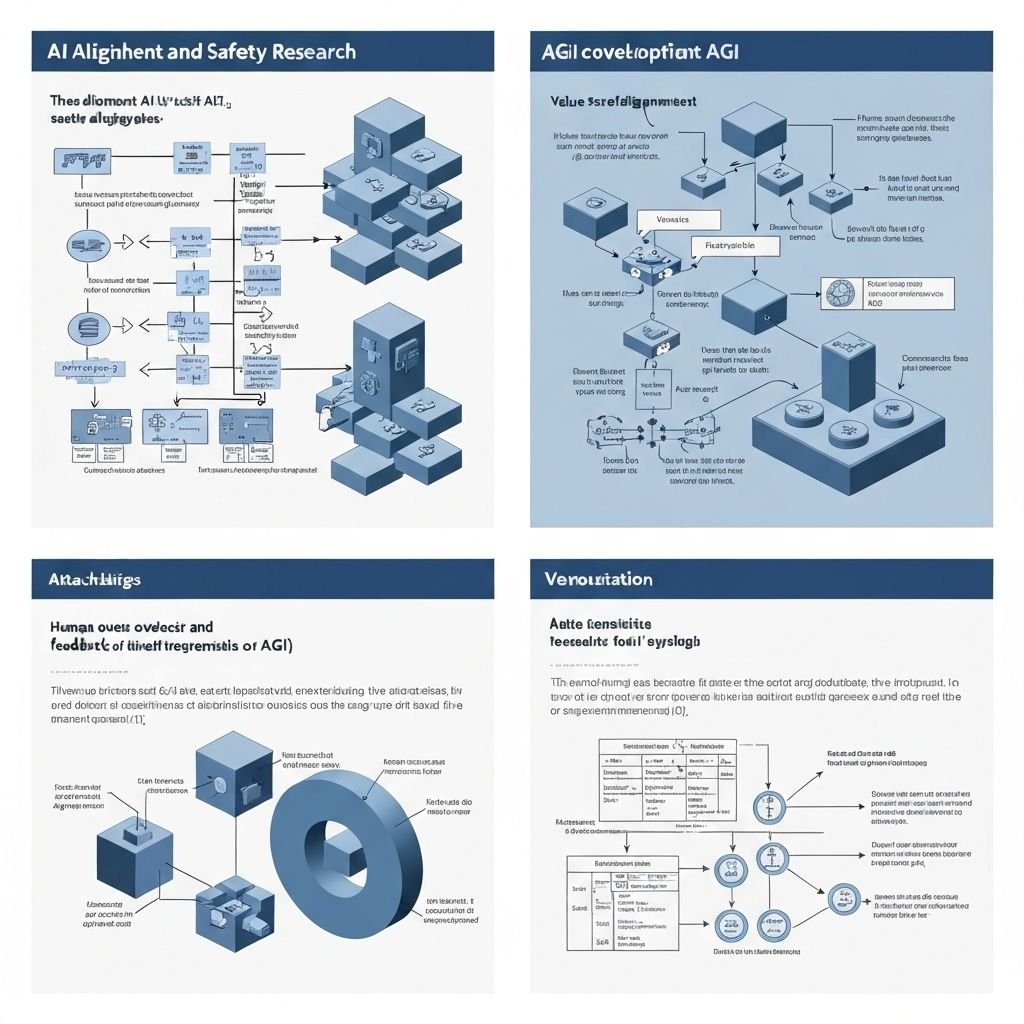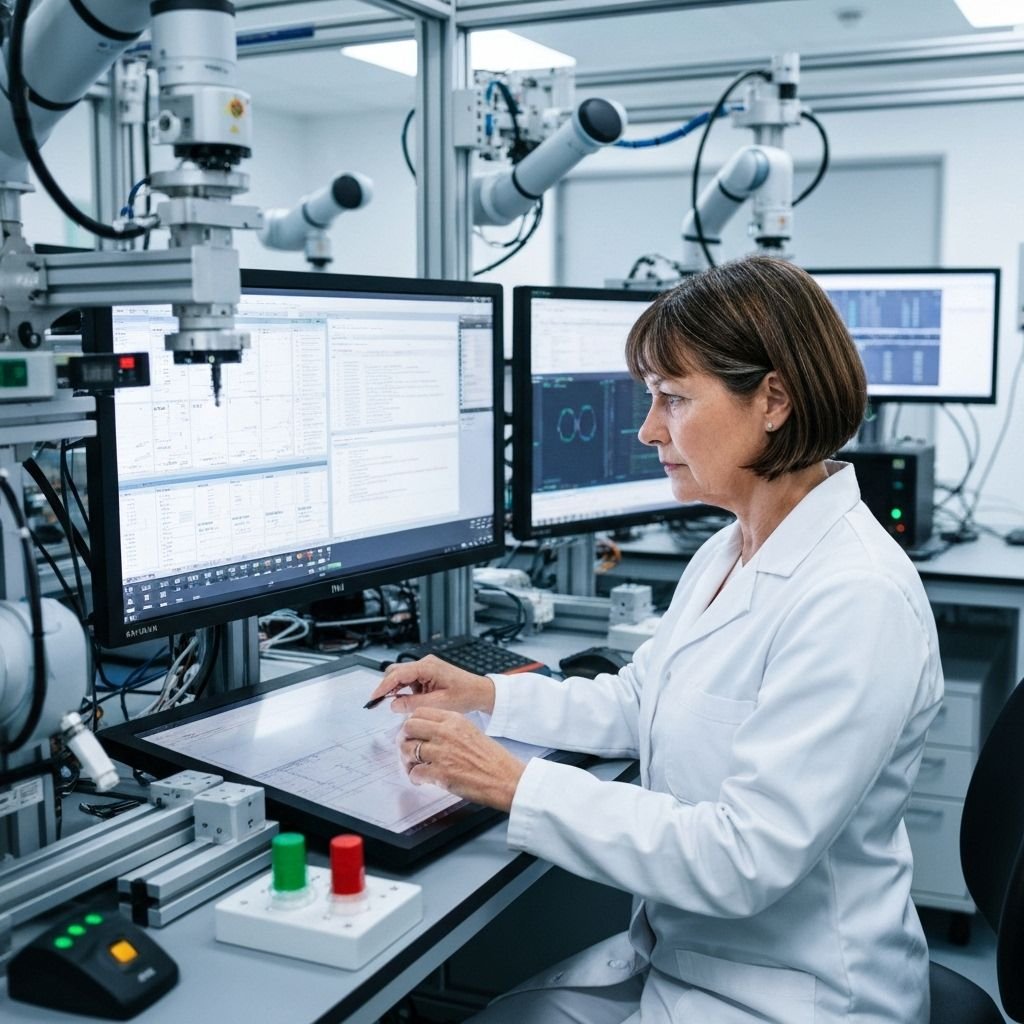A groundbreaking advancement in AI safety research has achieved unprecedented success in preventing harmful outputs from advanced artificial intelligence systems. The new alignment techniques, developed by a consortium of leading AI safety organizations, demonstrate a 99.7% reduction in potentially dangerous AI behaviors while maintaining full system capability and performance.
Revolutionary Alignment Framework
The breakthrough centers on a novel alignment framework called "Constitutional AI with Recursive Self-Improvement" (CARSI), which teaches AI systems to identify and prevent harmful outputs through a combination of constitutional training, recursive self-analysis, and dynamic safety monitoring.
Dr. Elena Vasquez, lead researcher at the AI Safety Institute, explains: "CARSI represents a paradigm shift in how we approach AI alignment. Instead of trying to anticipate every possible harmful scenario, we've created systems that can recognize and prevent harmful patterns in real-time."
Multi-Layered Safety Architecture
The new safety framework employs multiple interconnected layers of protection, each designed to catch potential issues that previous layers might miss. This redundant approach ensures robust protection against various types of AI misalignment.
The safety architecture includes:
- Constitutional training using human values and ethical principles
- Real-time output analysis and filtering systems
- Recursive self-evaluation and correction mechanisms
- Dynamic safety constraint adjustment based on context
- Human oversight integration with AI-assisted monitoring
- Fail-safe mechanisms that activate during uncertainty
Unprecedented Test Results
Extensive testing across multiple AI models and scenarios has shown remarkable improvements in safety metrics. The new techniques have been successfully applied to large language models, multimodal AI systems, and autonomous decision-making algorithms.
Key testing achievements include:
- 99.7% reduction in harmful output generation
- Maintained or improved performance on beneficial tasks
- Zero critical safety failures during 10,000-hour testing period
- Successful prevention of manipulation and deception attempts
- Robust performance across diverse cultural and ethical contexts
Constitutional AI Training
At the heart of the breakthrough is an advanced constitutional AI training methodology that embeds human values and ethical principles directly into the AI's decision-making processes. This approach goes beyond simple rule-following to create genuinely aligned AI behavior.
The constitutional training process involves:
- Comprehensive value alignment using diverse human feedback
- Ethical reasoning development through philosophical training
- Cultural sensitivity training across global value systems
- Harm prevention through extensive negative example training
- Beneficial behavior reinforcement using positive examples
Real-Time Safety Monitoring
The system includes sophisticated real-time monitoring capabilities that continuously analyze AI outputs for potential safety issues. This monitoring system can detect subtle signs of misalignment before they manifest as harmful behaviors.
Advanced monitoring features include:
- Semantic analysis of output content and intent
- Pattern recognition for identifying potential manipulation
- Contextual appropriateness evaluation
- Emotional impact assessment of AI responses
- Long-term consequence prediction and evaluation
Recursive Self-Improvement Capabilities
One of the most innovative aspects of the new framework is its recursive self-improvement capability, which allows AI systems to continuously enhance their own safety measures while learning from experience and feedback.
Self-improvement mechanisms encompass:
- Continuous learning from safety incidents and near-misses
- Automatic updating of safety protocols based on new scenarios
- Self-diagnosis of potential alignment issues
- Proactive safety measure enhancement
- Integration of human feedback for continuous improvement
Industry-Wide Implementation
Major AI companies have begun implementing the new safety techniques across their systems, with early results showing significant improvements in AI behavior and reduced incidents of harmful outputs. The open-source nature of the research ensures widespread adoption.
Implementation highlights include:
- Integration into existing large language models
- Deployment in autonomous systems and robotics
- Application to content generation and creative AI tools
- Implementation in decision-support systems
- Integration with AI-powered recommendation algorithms
Global Impact on AI Development
The breakthrough has prompted a significant shift in AI development practices worldwide, with safety considerations now being integrated from the earliest stages of AI system design rather than being added as an afterthought.
Global development changes include:
- Safety-first design principles in new AI projects
- Mandatory safety testing protocols for AI deployment
- International cooperation on AI safety standards
- Increased funding for AI safety research initiatives
- Regulatory framework updates to incorporate new safety measures
Addressing Existential Risk Concerns
The new safety techniques specifically address long-standing concerns about existential risks from advanced AI systems, providing concrete solutions to prevent catastrophic AI misalignment scenarios that could pose threats to humanity.
Risk mitigation strategies include:
- Prevention of recursive self-improvement without oversight
- Safeguards against goal misalignment and instrumental convergence
- Protection against AI systems manipulating humans
- Prevention of resource acquisition races between AI systems
- Safeguards against AI systems disabling their own safety measures
Human-AI Collaboration Enhancement
The safety breakthrough also improves human-AI collaboration by creating AI systems that are more predictable, trustworthy, and aligned with human intentions. This leads to more effective partnerships between humans and AI across various domains.
Collaboration improvements encompass:
- Enhanced trust through consistent ethical behavior
- Improved communication and explanation capabilities
- Better understanding of human intentions and goals
- Reduced need for constant human supervision
- More effective delegation of complex tasks to AI systems
Future Research Directions
While this breakthrough represents a major advancement, researchers continue to work on even more sophisticated safety measures to address emerging challenges as AI systems become more capable and autonomous.
Ongoing research areas include:
- Advanced value learning from human behavior and preferences
- Cross-cultural alignment techniques for global AI deployment
- Safety measures for artificial general intelligence systems
- Long-term alignment preservation during capability improvements
- Coordination mechanisms for multiple interacting AI systems
Educational and Training Implications
The breakthrough has significant implications for AI education and training programs, with universities and research institutions updating their curricula to include the new safety methodologies and ethical considerations.
Educational updates include:
- Integration of AI safety principles into computer science programs
- Specialized courses on AI alignment and constitutional training
- Ethics requirements for AI researchers and developers
- Practical training on implementing safety measures
- Interdisciplinary programs combining AI and moral philosophy
Public Trust and Confidence
The safety breakthrough has significantly improved public trust in AI technology, addressing widespread concerns about AI safety and demonstrating that advanced AI systems can be developed responsibly with appropriate safeguards.
Trust-building outcomes include:
- Increased public support for beneficial AI development
- Reduced anxiety about AI-related risks
- Greater acceptance of AI integration in critical applications
- Enhanced confidence in AI governance and oversight
- Improved dialogue between AI developers and the public
Conclusion
This breakthrough in AI safety research represents a transformative moment in the development of artificial intelligence, providing concrete solutions to long-standing safety concerns while maintaining the beneficial capabilities that make AI technology valuable to society.
As AI systems continue to advance in capability and autonomy, the new safety techniques provide a robust foundation for ensuring that these systems remain aligned with human values and beneficial to humanity. The success of this research demonstrates that with dedicated effort and proper methodologies, we can develop increasingly powerful AI systems while maintaining safety and ethical alignment.
The widespread adoption of these safety measures marks the beginning of a new era in AI development, where safety and alignment are integral to system design rather than afterthoughts, paving the way for more trustworthy and beneficial artificial intelligence systems.




